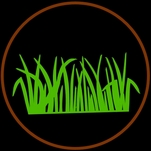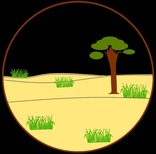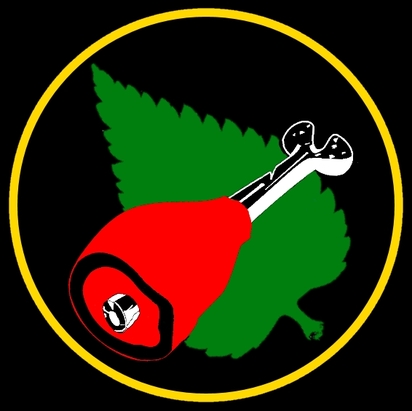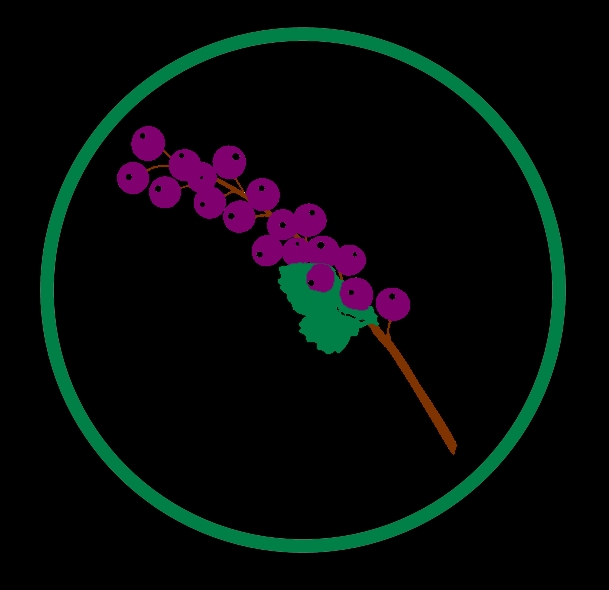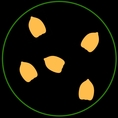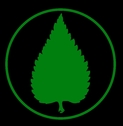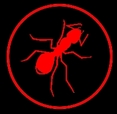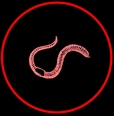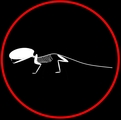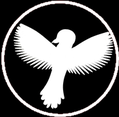Tinamou
Tinamus sp.
Where is it found?
Geographical location is species dependent, but can be found in Mexico, Central and South America in:
Rainforests, grassland, savannah, and mountains.
Diet and foraging method
Key adaptations
|
Nostrils at the base of their bill to allow them to sense food and not get blocked by soil when probing the ground.
Females lay bright, glossy eggs that may allow males to chose high quality eggs to incubate. |
|
Social organisation and mating system
Males hold territories and make nests while females inspect the males and decide which ones to mate with and whose nest eggs will be laid in to. Polgynandrous mating system, and females normally stay together in groups of four.
Did you know that...?
Tinamous are one of the most ancient groups of birds, despite choosing not to fly and spending most of their time on the ground. When they sense a predator they freeze to the spot rather than fleeing or flying away.
Taxonomy
Sources:
http://en.wikipedia.org/wiki/Tinamou
http://www.arkive.org/red-winged-tinamou/rhynchotus-rufescens/
Maps from: http://species.mol.org/species/
Brushland Tinamou: "Brushland Tinamou" by http://www.flickr.com/photos/31003918@N05 - http://www.flickr.com/photos/31003918@N05/6437912125/in/photostream. Licensed under CC BY 2.0 via Wikimedia Commons - https://commons.wikimedia.org/wiki/File:Brushland_Tinamou.jpg#/media/File:Brushland_Tinamou.jpg
"Crested Tinamou Bronx Zoo" by Evanphoto - Own work. Licensed under CC BY-SA 3.0 via Wikimedia Commons - https://commons.wikimedia.org/wiki/File:Crested_Tinamou_Bronx_Zoo.JPG#/media/File:Crested_Tinamou_Bronx_Zoo.JPG
"Great Tinamou (Tinamus major) (4505572022)" by Dominic Sherony - Great Tinamou (Tinamus major)Uploaded by Magnus Manske. Licensed under CC BY-SA 2.0 via Wikimedia Commons - https://commons.wikimedia.org/wiki/File:Great_Tinamou_(Tinamus_major)_(4505572022).jpg#/media/File:Great_Tinamou_(Tinamus_major)_(4505572022).jpg
"Tinamus majorPCSL00504B" by Patrick Coin (Patrick Coin) - Photograph taken by Patrick Coin. Licensed under CC BY-SA 2.5 via Wikimedia Commons - https://commons.wikimedia.org/wiki/File:Tinamus_majorPCSL00504B.jpg#/media/File:Tinamus_majorPCSL00504B.jpg
Patagonian Tinamou: "Tinamotis ingoufi" by CHUCAO - Own work. Licensed under CC BY-SA 3.0 via Wikimedia Commons - https://commons.wikimedia.org/wiki/File:Tinamotis_ingoufi.JPG#/media/File:Tinamotis_ingoufi.JPG
Brazilian Tinamou: "Crypturellus strigulosus". Licensed under CC BY 2.0 via Wikimedia Commons - https://commons.wikimedia.org/wiki/File:Crypturellus_strigulosus.jpg#/media/File:Crypturellus_strigulosus.jpg
http://www.arkive.org/red-winged-tinamou/rhynchotus-rufescens/
Maps from: http://species.mol.org/species/
Brushland Tinamou: "Brushland Tinamou" by http://www.flickr.com/photos/31003918@N05 - http://www.flickr.com/photos/31003918@N05/6437912125/in/photostream. Licensed under CC BY 2.0 via Wikimedia Commons - https://commons.wikimedia.org/wiki/File:Brushland_Tinamou.jpg#/media/File:Brushland_Tinamou.jpg
"Crested Tinamou Bronx Zoo" by Evanphoto - Own work. Licensed under CC BY-SA 3.0 via Wikimedia Commons - https://commons.wikimedia.org/wiki/File:Crested_Tinamou_Bronx_Zoo.JPG#/media/File:Crested_Tinamou_Bronx_Zoo.JPG
"Great Tinamou (Tinamus major) (4505572022)" by Dominic Sherony - Great Tinamou (Tinamus major)Uploaded by Magnus Manske. Licensed under CC BY-SA 2.0 via Wikimedia Commons - https://commons.wikimedia.org/wiki/File:Great_Tinamou_(Tinamus_major)_(4505572022).jpg#/media/File:Great_Tinamou_(Tinamus_major)_(4505572022).jpg
"Tinamus majorPCSL00504B" by Patrick Coin (Patrick Coin) - Photograph taken by Patrick Coin. Licensed under CC BY-SA 2.5 via Wikimedia Commons - https://commons.wikimedia.org/wiki/File:Tinamus_majorPCSL00504B.jpg#/media/File:Tinamus_majorPCSL00504B.jpg
Patagonian Tinamou: "Tinamotis ingoufi" by CHUCAO - Own work. Licensed under CC BY-SA 3.0 via Wikimedia Commons - https://commons.wikimedia.org/wiki/File:Tinamotis_ingoufi.JPG#/media/File:Tinamotis_ingoufi.JPG
Brazilian Tinamou: "Crypturellus strigulosus". Licensed under CC BY 2.0 via Wikimedia Commons - https://commons.wikimedia.org/wiki/File:Crypturellus_strigulosus.jpg#/media/File:Crypturellus_strigulosus.jpg


